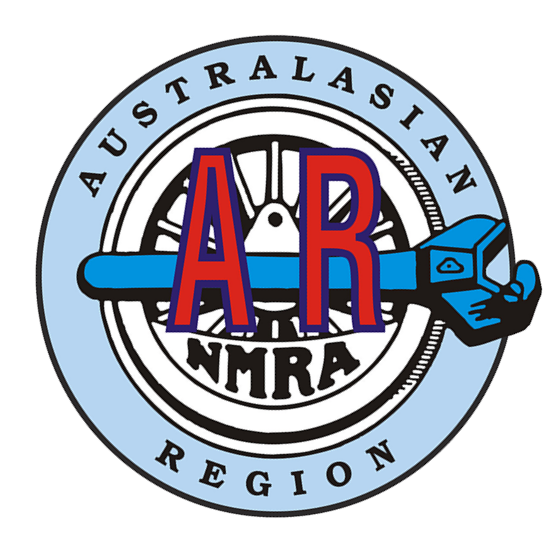| Leaving the Station | Each clinic has been classified ‘as suitable’ for three target audience types: ‘L’ for Leaving the Station—those new or starting their journey in the topic, ‘S’ for Steaming On—targeted for the modellers well on their journey, and ‘P’ is for topics of a Prototype nature. Flags denote international presenters Note: Rooms for clinics are subject to change based on ticket availablity |
| Steaming On | |
| Prototype topics |
Clinic Program
- Select one of the tabs below based on the day and time you wish to view clinics.
- Hit the ‘Book Now’ button next to the clinic you wish to reserve a slot in.
- You can review all your bookings under the ‘My Bookings’ Page, or within here as well.
- To cancel a booking, press the ‘cancel’ button
- Please only select one clinic per session.
Friday AM
Friday PM
Saturday AM
Saturday PM
Sunday AM
Sunday PM
| About this Clinic | Takeouts | Spots | L | S | P | Clinician |
|---|---|---|---|---|---|---|
| Morning Tea | ||||||
| Flat Cars—Protype to Model The presentation covers the development of Flat Car/Platform Wagons over the decades, loading principles and quick look at some of the loads they carried for both narrow and standard gauge railways/railroads. Plus, some tips on how to model them, making loads and adding them to your rollingstock. | You will have an understanding on how to build your own flat car/platform wagon, make loads and enhance your rollingstock that will assist you to have prototype operations. | 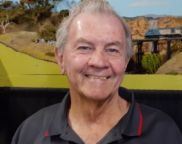 Arthur Hay | ||||
| Format: Presentation – up to 60 people, Kingston Town Room | ||||||
| Scratch Building Industrial Sites Sometimes the scene you want is not supported by kits. Scratch building is easy and we will walk through making an industrial scene. We will have examples of a building from the “mock up” to final finish for you to see and touch. | You will have confidence to scratch build a model using easily available tools and materials. | 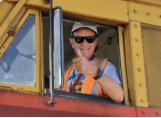 Jeff Lee MMR | ||||
| Format: Workshop – up to 25 people, Winx Room | Reserve your spot | 62 places | ||||
| A Newcastle Rail and Industry Museum Rail museums, often including working train layouts, are becoming more common and more professional, such as the recently established Bathurst Rail Museum. This clinic will look at similar museums around the world, and discuss ideas for a Newcastle Rail and Industry Museum, covering the rail, maritime, industrial and architectural heritage of Newcastle. It will include a presentation and workshop to explore its potential management, design and operation. | Newcastle’s unique history, and museum designs from around the world. Also an opportunity to help shape this initiative. | 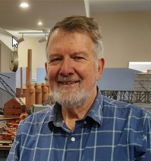 Garry Glazebrook | ||||
| Format: Seminar – up to 45 people, Phar Lap Room | Reserve your spot | 63 places | ||||
| LCC – The Current State of Use in Layouts LCC has now been around for almost 20 years. We will look at the very basic implementation, attempt to resolve the confusion between DCC and LCC, and talk about some current LCC products. We will demonstrate some locally made products and show how LCC works with and without the need for computer systems and describe lessons learnt from Michael Peters Cooinda layout for the past eleven years. | A clearer understanding of the role LCC plays in the control of model railway layouts. | 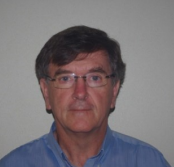 Chris Minahan | ||||
| Format: Presentation – up to 60 people Kingston Town Room | Reserve your spot | |||||
| Lunch | ||||||
| Start | About this Clinic | Takeouts | Spots | L | S | P | Clinician |
|---|---|---|---|---|---|---|---|
| 12.30 | Lunch | ||||||
| 1.15 pm | Running full prototype length model trains Many model railway enthusiasts will tell you that small scale model locomotives can’t pull a scale load. This is true for some off the shelf models and is mostly a problem for steam locomotives with tenders. This talk explores the various ways to achieve prototype length train operations. | The basic theory about friction and rolling resistance. How to improve locomotive tractive effort How to decrease the train rolling resistance Layout design factors. | 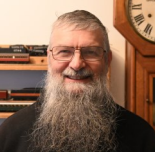 Terry Flynn | ||||
| Format: Seminar – up to 45 people, Phar Lap Room | Reserve your spot | spot | |||||
| Wheels, Rails, Pickup Getting your locos and rolling stock to stay on the track. | His trains will stay on the track. | 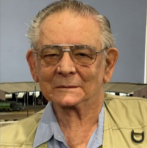 Gerry Hopkins MMR | |||||
| Format: Workshop – up to 25 people, Winx Room | Reserve your spot | spot | |||||
| (1h 45m) | Setting Up for Operations with JMRI Do you want to operate your layout similar to the prototype? Do you want the layout to have a purpose? This clinic will walk you through the process of how to set up JMRI Ops Pro for freight car forwarding on a layout. | This clinic will lead you through the building blocks of JMRI Operations Pro so you can use it to set up your layout to generate realistic paperwork for Operations on your layout. | 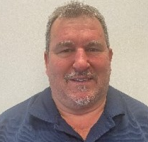 Duncan Cabassi | ||||
| Format: Presentation – up to 60 people, Kingston Town Room | Reserve your spot | spot | |||||
| 2.15 pm | Decoders – Preparation, Selection, Installation and Programming. Preparing your loco – isolation of parts and connecting of parts. Which decoder to choose for you loco, your knowledge and your skills. Where do you look for information on your loco and your decoder. Choosing the right wires and bits for your install. How to install LEDs in your locos and rolling stock. Testing your install and programming for the your enjoyment. | Knowing what decoders can do for you so that you get the best results for your money and the most satisfaction from your work. |  Gerry Hopkins MMR | ||||
| Format: Seminar – up to 45 people, Phar Lap Room | Reserve your spot | spot | |||||
| How do you couple various makes of rolling stock. A primer on N couplers. There are several types of couplers supplied with various brands of rolling stock and they all don’t play nicely with each other to provide trouble free running and operations. This clinic will look at the different types, where best to use them and different ways of changing and tuning couplers and bogies to provide reliable running. If you have rolling stock that have troubles bring them along | How to select the right coupler and how to convert your rolling stock for trouble free running. |  Rob Peterson | |||||
| Format: Seminar – up to 45 people, Phar Lap Room | Reserve your spot | spot | |||||
| 3.00 | Afternoon Tea | ||||||
| 3.30 pm | Focus on composition and creative viewpoints. Telling a Story” from many different train locations and journeys visited overseas and in Australia. A photographic train journey that will focus on creativity rather than camera techniques. Improve your images by using compositional guidelines, looking for the light, and using a different perspective. Experience train trips and museums visited in UK, Switzerland, Canada, and Australia. Photography tips and references to professional websites in the handout. | Use composition and creativity to tell a story with your train photos. Enjoy some new, or rekindle some existing, train journeys. Website references in handouts. | 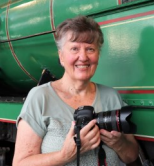 Ruth Garbutt | ||||
| Format: Workshop – up to 25 people, Winx Room | Reserve your spot | spot | |||||
| (1h 45m) | Baseline Weathering I’ll present the five basic steps I use to improve the prototypical appearance and create some individuality to all my rolling stock: • Trucks/couplers • Paint fade • Washes • Drybrush / Highlights • Flat finish Although these techniques are presented in HO, they crossover to all scales. I utilise airbrushes but also present alternative techniques to achieve similar end results | The confidence to try some or all of these techniques and see what works for each individual modeler. | 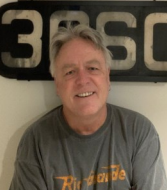 Steve Pettit MMR | ||||
| Format: Presentation – up to 60 people Kingston Town Room | Reserve your spot | spot | |||||
| Moving Coal on the Newcastle-Fassifern Layout If moving coal in the 1960’s in NSW is your thing, then this clinic aims at exploring the intricacy of the real prototype in the Hunter Region, and how I simulate it on my Newcastle – Fassifern layout. Includes details of different types of trains, coal types, destinations, motive power and schedules. Includes details how my prototype – based schedules were developed. | History of coal mining and rail movement in the Hunter up to the 1960’s Coal markets (export, steel making, locomotive purposes, other industry) Generating prototype-based timetables. |  Garry Glazebrook | |||||
| Format: Seminar – up to 45 people, Phar Lap Room | Reserve your spot | spot | |||||
| 4.30 pm | Get the Tru-Blu Scoop on Blunami A deep dive into the new Soundtraxx Blunami DCC sound decoders. Discover all the cool new features this product can offer. Wireless control: Yes! Access to quickly set cv’s: Yes! Running on battery power: Yes! Running on an analogue system: Absolutely, Yes! Come and see the exciting innovations cooked up by the folks at Soundtraxx. | Knowledge on how far Bluetooth technology has come – hot off the track from the recent USA convention. | 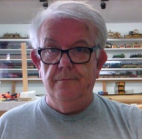 Martin Jenkins | ||||
| Format: Seminar – up to 45 people, Phar Lap Room | Reserve your spot | spot | |||||
| Getting your MoJo back or finishing that project you started a few years ago. What happened to that project you started a few years ago and put it away “till later”. Get your enthusiasm back and get it finished! | How to restart that unfinished project and be proud of it! |  Gerry Hopkins MMR | |||||
| Format: Seminar – up to 25 people, Winx Room | Reserve your spot | spot | |||||
| 5.15 | Clinics Close | ||||||
| Start | About this Clinic | Takeouts | Spots | L | S | P | Clinician |
|---|---|---|---|---|---|---|---|
| 8.00 am (30 mins) | Official Opening and Address Convention Host: Paul Rollason, Region President: Duncan Cabassi Location: Flight One Hangar | ||||||
| 8.30 am (45 mins) | Scale Speed – How Fast Is That? Nothing can be so upsetting seeing a train travelling at 300 scale mile per hour on an exhibition layout or someone’s home layout. This session will cover just how fast your trains are travelling in scale speed on your layout. | Craig Mackie MMR | |||||
| Format: Presentation – Room 1 | 42 available | ||||||
| US Safeworking Systems and Signal Types for your US Model Railroad An outline of the safeworking systems used in the USA: Timetable and Train Order, Absolute Permissive Block, CTC, Electric Staff, Track Warrant, and double track systems. An outline of designs of signals used in the USA from the High Ball onwards. | Stephen Buck | ||||||
| Format: Presentation – Room 2 | 41 available | ||||||
| An Introduction to Car Cards & Waybills This talk will provide attendees with ideas and techniques required in creating Car Cards and Waybills for their own layout. | Anthony Palmer | ||||||
| Format: Presentation – Room 3 | 42 available | ||||||
| Selecting, Painting and Positioning Figures to Bring Your Layout to Life Actively choosing where (and where not!) to place figures on our layouts can sometimes be overlooked. Al Wright will share his ideas and suggestions for how you can really bring your layout to life by spending just a little bit more time and applying a few simple techniques. | Alistair Wright | ||||||
| Format: Clinic – Room 4 | 10 available | ||||||
| 9.30 am (45 mins) | Modelling the “Chamatiago & Southwestern” Layout Focus on realistic modelling techniques and finishes as it applies to Locos / Rollingstock / Structures / Details and Scenery. | Steve Pettit MMR | |||||
| Format: Presentation – Room 1 | 41 available | ||||||
| 3D Printing Techniques Explore the world of 3D printed components currently available for the building of Structures. | Stephen Shepherd | ||||||
| Format: Presentation – Room 2 | 42 available | ||||||
| Track Design for Your Space Design a Layout to suit your available Space | Dave Skelton | ||||||
| Format: Presentation – Room 3 | 42 available | ||||||
| Scratch Building with Styrene (build a HO Clothesline) After a short presentation, we will construct a single HO scale clothesline. We will provide a container to take your models home to keep them safe. You can paint the clothesline a silver colour in your own time after the Convention. Attendees are advised to bring: – Cutting Mat – Modelling knife – prefer snap off blade type – 1 x 30cm steel ruler – 1 x 15cm steel ruler – 1 pair of tweezers – ones available from Jaycar are good and cheap – 1 bottle of styrene glue – Revell Contactor professional is preferred (due to its delayed set time) – (Optional) Set of modelling files | Craig Mackie MMR | ||||||
| Format: Hands On – Room 4 | 10 available | ||||||
| Rolling Stock Maintenance for GREAT Operation There are causes for each and every derailment on our layouts. After years of building and operating a large mountain model railway, I would like to share my insights and understanding of how meticulous maintenance can lead to greater running and enjoyment. | Graham Barnes MMR | ||||||
| Format: Presentation – Room 5 | 15 available | ||||||
| 10.15 am (30 mins) | Morning Tea | ||||||
| 10.45 am (45 mins) | 90 Years of Development & Achievement in Model Railroading Our hobby today is vastly different from that available to our organization’s founders in 1935. We will review a number of significant events, processes, inventions, companies and individuals contributing to the progress of our hobby. | Paul Hobbs | |||||
| Format: Presentation – Room 1 | 42 available | ||||||
| How I Designed and 3D Printed Operational Rotary Dumper & Flood Loader How I designed and 3d printed an operational rotary dumper and flood loader. | Richard Beyko 🇨🇦 | ||||||
| Format: Presentation – Room 2 | 41 available | ||||||
| Using Aerial Photography and Public Records to Create Models of Buildings and Locations Using Aerial Photography and Public Records to Create Models of Buildings and Locations. | An understanding of how prototype locations can be used for create realistic Buildings and Locations from Aerial Photography and Public Records. | Eddie Gallier | |||||
| Format: Clinic – Room 3 | 42 available | ||||||
| Modelling HO Scale Tarpaulins After a short presentation, we will paint up some HO scale tarpaulins, cut them up and then fold two to six tarpaulins up for use on your layout. We will provide a small container to take your models home to keep them safe. Attendees are advised to bring: – 1x Pair of scissors | Craig Mackie MMR | ||||||
| Format: Hands On – Room 4 | 10 available | ||||||
| 11.45 am (45 mins) | Railway Work Equipment in Operations Work Equipment is a railroad accounting definition of non-revenue rolling stock, including glamorous business cars, imposing wrecking cranes and snow plows, through elderly passenger and freight cars providing accommodations and supplies for outfit crews. We will explore their operational possibilities and modeling opportunities. | Paul Hobbs | |||||
| Format: Presentation – Room 1 | 42 available | ||||||
| Installing and Operating US Safeworking and Signal Systems A review of Session 1. The functions of railroad signals and how to locate them. This will be based around “Speed Signals”, the system generally used in the western half of the USA. Use of the common US safeworking systems, TTO, APB and CTC. Use of these systems in Australia and NZ. Build your own APB block. Use of JMRI. Sources for parts. | Stephen Buck | ||||||
| Format: Presentation – Room 2 | 42 available | ||||||
| Decoder Pro for the Tech Challenged Model Railroader | Jim Younkins | ||||||
| Format: Presentation – Room 3 | 41 available | ||||||
| Scratch Building with Styrene (build 6 HO Pallets) After a short presentation, we will construct six HO scale pallets in a string and then you can cut them up to take home for future use on your layout. We will provide a small container to take your models home to keep them safe. You can paint them in your required colours in your own time after the Convention. Attendees are advised to bring: – Cutting Mat – Modelling knife – prefer snap off blade type – 1 x 30cm steel ruler – 1 x 15cm steel ruler – 1 pair of tweezers – ones available from Jaycar are good and cheap – 1 bottle of styrene glue – Revell Contactor professional is preferred (due to its delayed set time) – (Optional) Set of modelling files | Craig Mackie MMR | ||||||
| Format: Hands On – Room 4 | 10 available | ||||||
| 12.30 pm (60 mins) | Lunch | ||||||
| Start | About this Clinic | Takeouts | Spots | L | S | P | Clinician |
|---|---|---|---|---|---|---|---|
| 12.30 pm | Lunch | ||||||
| 1.30 pm (45 mins) | ESPHome: A Home Automation approach to Model Railroading Electronics and Control How to utlilise ESPHome on a Layout for automation and control, including Signal and Turnout Control, Block Detection and RFID Tokens for a Staff Machine. | Aaron Stinson | |||||
| Format: Presentation – Room 1 | 41 available | ||||||
| Keeping the Goods Moving on Kangaroo Valley Historic Railway A description of the methods used to administer the management of goods on a medium sized railway | Stephe Jitts MMR | ||||||
| Format: Presentation – Room 2 | 42 available | ||||||
| How I Designed and 3D Printed Operational Rotary Dumper & Flood Loader How I designed and 3d printed an operational rotary dumper and Flood Loader. | Richard Beyko 🇨🇦 | ||||||
| Format: Presentation – Room 3 | 42 available | ||||||
| Scenery Techniques Clinic on Scenery Techniques | Frank Godde MMR | ||||||
| Format: Hands-On – Room 4 | 10 available | ||||||
| 2.30 pm (45 Mins) | Self-made Electronic Circuits for DC Layouts Cheap, easily made Indicators, Displays, Power Modules for DC Layouts. All components are readily sourced from Jaycar and Element 14 (formely Farnell). | Allan Pogonowski | |||||
| Format: Presentation – Room 1 | 42 available | ||||||
| Scanning for 3D Printing Presenting techniques for object scanning with 3D Printing. | Darryl Clare OAM | ||||||
| Format: Presentation – Room 2 | 42 available | ||||||
| A Sequence Approach to Operations A partly drafted presentation planned for a Division 1 meeting, explaining my approach to and use of ‘sequence’ for operations on the Border District. | Anthony Palmer | ||||||
| Format: Presentation – Room 3 | 42 available | ||||||
| Air Brushing Techniques Air Brushing Hands-on Clinic – paint a Wagon Delegates should bring 2 wagons and a piece of track that they wish to paint. | Darren Lee | ||||||
| Format: Hands On – Room 4 | 14 available | ||||||
| 3.15 pm (30 Mins) | Afternoon Tea | ||||||
| 3.45 pm (45 Mins) | UP Railroad through its Annual Reports: 1945 – 1969 An insight into the happenings of the Union Pacific Railroad, through the lens of their Annual Reports. | Kevin Keeney 🇺🇸 | |||||
| Format: Presentation – Room 1 | 42 available | ||||||
| CAD Drafting for 3D Printing Presnting techniques for CAD Drafting for 3D Printing | Darryl Clare OAM | ||||||
| Format: Presentation – Room 2 | 41 available | ||||||
| Introduction to JMRI Learn the Basics of JMRI | Bob Tisdall | ||||||
| Format: Presentation – Room 3 | 42 available | ||||||
| JMRI Operations Hands-On Clinic of programming an Operating Session into JMRI. Attendees should bring a laptop with JMRI installed to participate. | Duncan Cabassi | ||||||
| Format: Hands On – Room 4 | 10 available | ||||||
| 4.30 pm | Closing Session | ||||||
| Start | About this Clinic | Takeouts | Spots | L | S | P | Clinician |
|---|---|---|---|---|---|---|---|
| 8.15 am (15 mins) | Opening Session | ||||||
| 8.30 am (45 mins) | Self-made Electronic Circuits for DC Layouts Cheap, easily made Indicators, Displays, Power Modules for DC Layouts. All components are readily sourced from Jaycar and Element 14 (formely Farnell). | Allan Pogonowski | |||||
| Format: Presentation – Room 1 | 42 available | ||||||
| Introduction to JMRI Learn the Basics of JMRI | Bob Tisdall | ||||||
| Format: Presentation – Room 2 | 41 available | ||||||
| Scanning for 3D Printing Presenting techniques for object scanning with 3D Printing. | Darryl Clare OAM | ||||||
| Format: Presentation – Room 3 | 42 available | ||||||
| Modelling HO Scale Tarpaulins After a short presentation, we will paint up some HO scale tarpaulins, cut them up and then fold two to six tarpaulins up for use on your layout. We will provide a small container to take your models home to keep them safe. Attendees are advised to bring: – 1x Pair of scissors | Craig Mackie MMR | ||||||
| Format: Clinic – Room 4 | 10 available | ||||||
| 9.30 am (45 mins) | Kit to Masterpiece (a Building Kit) Take a Building Kit and apply detail to make it a Masterpiece. | Alistair Wright | |||||
| Format: Presentation – Room 1 | 41 available | ||||||
| UP Railroad through its Annual Reports: 1945 – 1969 An insight into the happenings of the Union Pacific Railroad, through the lens of their Annual Reports. | Kevin Keeney 🇺🇸 | ||||||
| Format: Presentation – Room 2 | 42 available | ||||||
| CAD Drafting for 3D Printing Presnting techniques for CAD Drafting for 3D Printing. | Darryl Clare OAM | ||||||
| Format: Presentation – Room 3 | 42 available | ||||||
| Scratch Building with Styrene (build a HO Clothesline) After a short presentation, we will construct a single HO scale clothesline. We will provide a container to take your models home to keep them safe. You can paint the clothesline a silver colour in your own time after the Convention. Attendees are advised to bring: – Cutting Mat – Modelling knife – prefer snap off blade type – 1 x 30cm steel ruler – 1 x 15cm steel ruler – 1 pair of tweezers – ones available from Jaycar are good and cheap – 1 bottle of styrene glue – Revell Contactor professional is preferred (due to its delayed set time) – (Optional) Set of modelling files | Craig Mackie MMR | ||||||
| Format: Hands On – Room 4 | 10 available | ||||||
| 10.15 am (30 mins) | Morning Tea | ||||||
| 10.45 am (45 mins) | US Safeworking Systems and Signal Types for your US Model Railroad An outline of the safeworking systems used in the USA: Timetable and Train Order, Absolute Permissive Block, CTC, Electric Staff, Track Warrant, and double track systems. An outline of designs of signals used in the USA from the High Ball onwards. | Stephen Buck | |||||
| Format: Presentation – Room 1 | 42 available | ||||||
| Pushing the Limits on the Onondaga Cutoff Operations is a growing part of our hobby. On the Onondaga Cutoff, located in New Jersey in the United States, regular operating sessions have shaped the idea of the railroad. Join Dave Abeles for an inside look into the infrastructure and how it is maintained to support the movement of trains. | Dave Abeles 🇺🇸 | ||||||
| Format: Presentation – Room 2 | 41 available | ||||||
| Railway Work Equipment in Operations Work Equipment is a railroad accounting definition of non-revenue rolling stock, including glamorous business cars, imposing wrecking cranes and snow plows, through elderly passenger and freight cars providing accommodations and supplies for outfit crews. We will explore their operational possibilities and modeling opportunities. | Paul Hobbs | ||||||
| Format: Presentation – Room 3 | 42 available | ||||||
| JMRI Operations Hands-On Clinic of programming an Operating Session into JMRI. Attendees should bring a laptop with JMRI installed to participate. | Duncan Cabassi | ||||||
| Format: Clinic – Room 4 | 10 available | ||||||
| 11.45 am (45 mins) | Modelling the “Chamatiago & Southwestern” Layout Focus on realistic modelling techniques and finishes as it applies to Locos / Rollingstock / Structures / Details and Scenery. | Steve Pettit MMR | |||||
| Format: Presentation – Room 1 | 42 available | ||||||
| Enhancing Your Models to New Levels Learn new techniques to take your models to new levels of realism. Watch demonstrations on how to use painting techniques such as blackbasing and post shading to achieve multi- dimensional depth to paint. You’ll also see various techniques to add realistic weathering to your miniatures, and how technology can be used to create your own paint masks. | Simon Holdsworth | ||||||
| Format: Presentation – Room 2 | 42 available | ||||||
| Scale Speed – How Fast is That? Nothing can be so upsetting seeing a train travelling at 300 scale mile per hour on an exhibition layout or someone’s home layout. This session will cover just how fast your trains are travelling in scale speed on your layout. | Craig Mackie MMR | ||||||
| Format: Presentation – Room 3 | 15 available | ||||||
| Scenery Techniques Clinic on Scenery Techniques | Frank Godde MMR | ||||||
| Format: Clinic – Room 4 | 9 available | ||||||
| 12.30 pm (60 mins) | Lunch | ||||||
| Start | About this Clinic | Takeouts | Spots | L | S | P | Clinician |
|---|---|---|---|---|---|---|---|
| 12.30 pm | Lunch | ||||||
| 1.30 pm (45 mins) | 3D Printing Techniques Explore the world of 3D printed components currently available for the building of Structures. | Steven Shepherd | |||||
| Format: Presentation – Room 1 | 42 available | ||||||
| Weighting Wagons and the NMRA Standards Weighting wagons for smooth and reliable operation using the NMRA standards as a base. | Dave Skelton | ||||||
| Format: Presentation – Room 2 | 42 available | ||||||
| Using Aerial Photography and Public Records to Create Models of Buildings and Locations Using Aerial Photography and Public Records to Create Models of Buildings and Locations. | An understanding of how prototype locations can be used for create realistic Buildings and Locations from Aerial Photography and Public Records. | Eddie Gallier | |||||
| Format: Presentation – Room 3 | 42 available | ||||||
| Scratch Building with Styrene (build 6 HO Pallets) After a short presentation, we will construct six HO scale pallets in a string and then you can cut them up to take home for future use on your layout. We will provide a small container to take your models home to keep them safe. You can paint them in your required colours in your own time after the Convention. Attendees are advised to bring: – Cutting Mat – Modelling knife – prefer snap off blade type – 1 x 30cm steel ruler – 1 x 15cm steel ruler – 1 pair of tweezers – ones available from Jaycar are good and cheap – 1 bottle of styrene glue – Revell Contactor professional is preferred (due to its delayed set time) – (Optional) Set of modelling files | Craig Mackie MMR | ||||||
| Format: Hands On – Room 4 | 9 available | ||||||
| Track Design for Your Space Design a Layout to suit your availiable Space | Graeme Barnes MMR | ||||||
| Format: Presentation – Room 5 | 14 available | ||||||
| 2.30 pm (45 Mins) | Installing and Operating US Safeworking and Signal Systems A review of Session 1. The functions of railroad signals and how to locate them. This will be based around “Speed Signals”, the system generally used in the western half of the USA. Use of the common US safeworking systems, TTO, APB and CTC. Use of these systems in Australia and NZ. Build your own APB block. Use of JMRI. Sources for parts. | Stephen Buck | |||||
| Format: Presentation – Room 1 | 42 available | ||||||
| Special Train Movements Spice up your operations sessions with special trains. These trains hold great variety, can be run at odd times, and can slot into the open windows of your schedule/timetable. Examples of prototype and model will be drawn mainly from NSW. | Ian Barnes MMR | ||||||
| Format: Presentation – Room 2 | 41 available | ||||||
| A Sequence Approach to Operations A partly drafted presentation planned for a Division 1 meeting, explaining my approach to and use of ‘sequence’ for operations on the Border District. | Anthony Palmer | ||||||
| Format: Presentation – Room 3 | 42 available | ||||||
| Air Brushing Techniques Air Brushing Hands-on Clinic – paint a Wagon Delegates should bring 2 wagons and a piece of track that they wish to paint. | Darren Lee | ||||||
| Format: Hands On – Room 4 | 15 available | ||||||
| 3.15 pm (30 Mins) | Afternoon Tea | ||||||
| 3.45 pm (45 Mins) | An Introduction to Car Cards & Waybills This talk will provide attendees with ideas and techniques required in creating Car Cards and Waybills for their own layout. | Anthony Palmer | |||||
| Format: Presentation – Room 1 | 42 available | ||||||
| Are You a Prototype Modeller? This session will cover how the presenter bends reality to allow certain trains to run on his layout. He will discuss what he runs, and why he runs them and then respond with what the Guru says. The solution to any conundrum of what runs where will be easily and humorously resolved. | Craig Mackie MMR | ||||||
| Format: Presentation – Room 2 | 42 available | ||||||
| Decoder Pro for the Tech Challenged Model Railroader Explore the world of 3D printed components currently available for the building of Structures. | Jim Younkins 🇺🇸 | ||||||
| Format: Presentation – Room 3 | 41 available | ||||||
| Clinic | Rolling Stock Maintenance for GREAT Operation There are causes for each and every derailment on our layouts. After years of building and operating a large mountain model railway, I would like to share my insights and understanding of how meticulous maintenance can lead to greater running and enjoyment. | Dave Skelton | ||||||
| Format: Presentation – Room 4 | 10 available | ||||||
| 4.30 pm | Closing Session | ||||||
| Start | About this Clinic | Takeouts | Spots | L | S | P | Clinician |
|---|---|---|---|---|---|---|---|
| 8.00 am (30 mins) | Opening Session | ||||||
| 8.30 am (45 mins) | Kit to Masterpiece Take a Building Kit and apply detail to make it a Masterpiece. | Alistair Wright | |||||
| Format: Presentation – Room 1 | 42 available | ||||||
| Are You a Prototype Modeller? This session will cover how the presenter bends reality to allow certain trains to run on his layout. He will discuss what he runs, and why he runs them and then respond with what the Guru says. The solution to any conundrum of what runs where will be easily and humorously resolved. | Craig Mackie MMR | ||||||
| Format: Presentation – Room 2 | 42 available | ||||||
| Scanning for 3D Printing Presenting techniques for object scanning with 3D Printing. | Darryl Clare OAM | ||||||
| Format: Presentation – Room 3 | 42 available | ||||||
| Rolling Stock Maintenance for GREAT Operation There are causes for each and every derailment on our layouts. After years of building and operating a large mountain model railway, I would like to share my insights and understanding of how meticulous maintenance can lead to greater running and enjoyment. | Dave Skelton | ||||||
| Format: Clinic – Room 4 | 10 available | ||||||
| 9.30 am (45 mins) | Keeping the Goods Moving on Kangaroo Valley Historic Railway A description of the methods used to administer the management of goods on a medium sized railway. | Stephe Jitts MMR | |||||
| Format: Presentation – Room 1 | 41 available | ||||||
| Enhancing Your Models to New Levels Explore the world of 3D printed components currently available for the building of Structures. | Simon Holdsworth | ||||||
| Format: Presentation – Room 2 | 42 available | ||||||
| Special Train Movements Spice up your operations sessions with special trains. These trains hold great variety, can be run at odd times, and can slot into the open windows of your schedule/timetable. Examples of prototype and model will be drawn mainly from NSW. | Ian Barnes MMR | ||||||
| Format: Presentation – Room 3 | 42 available | ||||||
| Air Brushing Techniques Air Brushing Hands-on Clinic – paint a Wagon Delegates should bring 2 wagons and a piece of track that they wish to paint. | Darren Lee | ||||||
| Format: Hands On – Room 4 | 15 available | ||||||
| Format: Presentation – Room 5 | |||||||
| 10.15 am (30 mins) | Morning Tea | ||||||
| 10.45 am (45 mins) | 90 Years of Development & Achievement in Model Railroading Our hobby today is vastly different from that available to our organisation’s founders in 1935. We will review a number of significant events, processes, inventions, companies and individuals contributing to the progress of our hobby. | Paul Hobbs | |||||
| Format: Presentation – Room 1 | 42 available | ||||||
| 3D Printing Techniques Present the techniques of how to 3D print. | Steven Shepherd | ||||||
| Format: Presentation – Room 2 | 42 available | ||||||
| Decoder Pro for the Tech Challenged Model Railroader Helping the Technically challenged Model Railroader with using Decoder Pro. | Jim Younkins 🇺🇸 | ||||||
| Format: Clinic – Room 3 | 42 available | ||||||
| JMRI Operations Hands-On Clinic of programming an Operating Session into JMRI. Attendees should bring a laptop with JMRI installed to participate. | Duncan Cabassi | ||||||
| Format: Hands On – Room 4 | 9 available | ||||||
| 11.45 am (45 mins) | Railway Work Equipment in Operations Work Equipment is a railroad accounting definition of non-revenue rolling stock, including glamorous business cars, imposing wrecking cranes and snow plows, through elderly passenger and freight cars providing accommodations and supplies for outfit crews. We will explore their operational possibilities and modeling opportunities. | Paul Hobbs | |||||
| Format: Presentation – Room 1 | 41 available | ||||||
| Using Aerial Photography and Public Records to Create Models of Buildings and Locations Using Aerial Photography and Public Records to Create Models of Buildings and Locations. | An understanding of how prototype locations can be used for create realistic Buildings and Locations from Aerial Photography and Public Records. | Eddie Gallier | |||||
| Format: Presentation – Room 2 | 42 available | ||||||
| Selecting, Painting and Positioning Figures to Bring Your Layout to Life Actively choosing where (and where not!) to place figures on our layouts can sometimes be overlooked. Al Wright will share his ideas and suggestions for how you can really bring your layout to life by spending just a little bit more time and applying a few simple techniques. | Alistair Wright | ||||||
| Format: Clinic – Room 3 | 42 available | ||||||
| Painting Backdrops Demonstrate painting – sky, clouds, hills, trees and structures. The presentation will cover various methods of producing backdrops for model railways. It will cover how to add depth to a layout or diorama and demonstrate the merging of model scenery with backdrop colours as well as matching the style of painting which will suite your model scenery. | Ross Balderson MMR | ||||||
| Format: Clinic – Room 4 | 10 available | ||||||
| 12.30 pm (60 mins) | Lunch | ||||||
| Start | About this Clinic | Takeouts | Spots | L | S | P | Clinician |
|---|---|---|---|---|---|---|---|
| 12.30 pm | Lunch | ||||||
| Other Organised Activities – More Details TBA | |||||||
| 4.30 pm | Closing Session | ||||||
